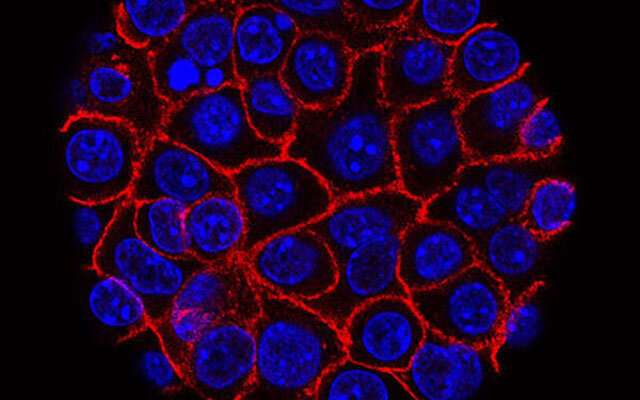keppra rash on face


In a study of patients with borderline resectable pancreatic cancer, combination chemotherapy with modified FOLFIRINOX before surgery increased survival relative to historical data and compared favorably to FOLFIRINOX plus hypofractionated radiotherapy, according to research from The University of Texas MD Anderson Cancer Center published today in JAMA Oncology.
The multicenter, randomized Phase II Alliance A021501 clinical trial, part of the National Cancer Institute’s National Clinical Trials Network, established presurgical, diovan hct 80mg 12.5 mg tablet or neoadjuvant, FOLFIRINOX as the preferred therapy for these patients. Early results from this study were first presented at the American Society of Clinical Oncology 2021 Gastrointestinal Cancers Symposium.
The patients receiving neoadjuvant modified FOLFIRINOX had an 18-month overall survival (OS) rate of 66.7%, exceeding both the preselected historical control rate of 50% and the OS rate of 47.3% in patients who received FOLFIRINOX followed by radiotherapy. The median OS of evaluable patients who received neoadjuvant FOLFIRINOX alone was 29.8 months; in patients who also received radiotherapy, median OS was 17.1 months.
“A clear role exists for the administration of systemic chemotherapy in the perioperative setting for this patient population,” said lead investigator Matthew Katz, M.D., chair of Surgical Oncology. “This research demonstrates that pancreatic cancers that appear to involve major blood vessels can safely be removed following FOLFIRINOX with favorable results.”
Patients diagnosed with borderline resectable pancreatic cancer have tumors that involve major abdominal blood vessels. Removal of these tumors requires complex operations, and not all patients benefit. Without pre-treatment, the cancer often recurs within a short time following surgery. Neoadjuvant therapy is used both to treat the disease and to select patients for whom surgery is likely to be most effective.
Both chemotherapy and radiation treatment often are used in the setting of borderline-resectable pancreatic cancers, but the optimal regimen has been debated. Despite multiple studies of radiation over the past two decades, data to support this therapy in the neoadjuvant setting are conflicting, and its role remains ambiguous.
The objective of this study was to evaluate two neoadjuvant regimens for borderline resectable pancreatic cancer—one that uses FOLFIRINOX chemotherapy alone (fluorouracil [5-FU], leucovorin, irinotecan, oxaliplatin) and one that uses systemic chemotherapy followed by stereotactic body radiation therapy (SBRT). The goal was to establish either or both treatments as standards of care and to identify therapeutic pillars upon which to add novel agents in future trials.
The study included 126 patients treated at 50 sites across the United States, randomized to receive systemic therapy (70 patients) or systemic therapy and sequential hypofractionated radiotherapy (56 patients). Among the first 30 evaluable patients enrolled to each arm, 17 in the chemotherapy alone arm and 10 in the combination arm had undergone complete resection with negative margins, leading to closure of the combination arm and continuation to full enrollment in the chemotherapy arm.
In this study, 104 of the 120 patients enrolled nationwide were white, demonstrating the need to develop systems to improve the diversity of patients enrolled into clinical trials for pancreatic cancer in the U.S.
Patients who met radiographic criteria were randomized to eight cycles of FOLFIRINOX chemotherapy or to seven cycles of FOLFIRINOX plus radiation therapy with SBRT or hypofractionated image-guided radiotherapy. Following restaging, patients suitable for surgery underwent pancreatectomy and then received four cycles of adjuvant folinic acid, fluorouracil and oxaliplatin (FOLFOX) chemotherapy.
Thirty-eight patients in the chemotherapy alone arm and 28 patients in the chemotherapy and radiation arm underwent surgery on protocol. Pancreatectomy was performed for 32 patients in the chemotherapy alone arm and 19 patients in the chemotherapy and radiation arm. Among patients who underwent pancreatectomy, complete resection with negative margins was achieved in 28 patients (88%) in the chemotherapy alone arm and 14 patients (74%) in the chemotherapy and radiation arm.
Both regimens were well tolerated. The most common grade 3+ adverse events possibly related to FOLFIRINOX treatment were diarrhea (18%), hypokalemia (14%) and neutropenia (12%). The most common grade 3+ adverse event during radiotherapy was anemia (5%).
“Given these study results, we believe all patients with tumors described as ‘borderline resectable’ should be treated with four months of FOLFIRINOX in anticipation of subsequent pancreatectomy,” Katz said. “These data provide the basis on which to build future studies for borderline resectable pancreatic cancer and to provide better treatments and outcomes for our patients.”
Source: Read Full Article